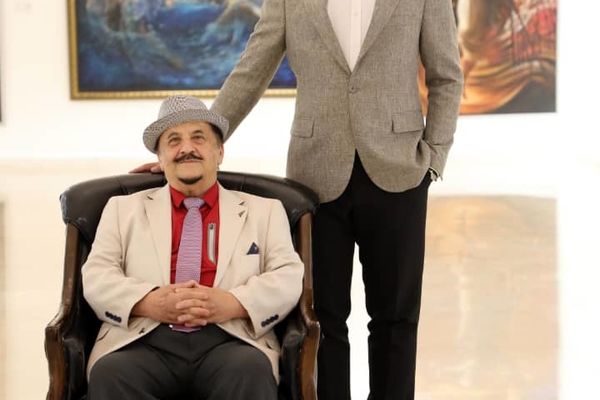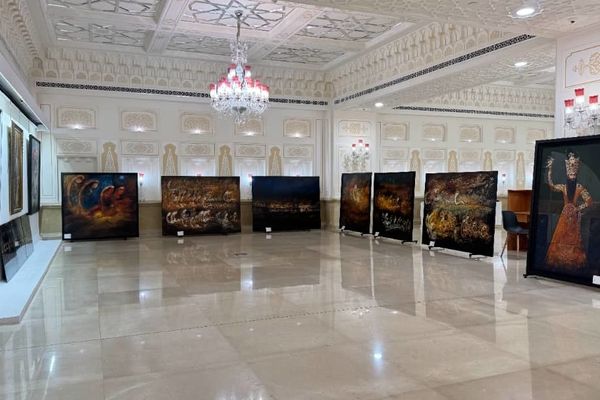Post Orientalism at Maher Gallery, Iran Mall
Maher Gallery has elevated Iran Mall from a shopping destination to a cultural and artistic hub by hosting the works of master artist Hojjat Shakiba and launching a museum section dedicated to Qajar-era jewelry.
ArtDayMe – The solo exhibition of Hojjat Shakiba’s works, titled Post Orientalism, is currently on view at Maher Gallery in Iran Mall and will remain open to visitors until the end of September.
The exhibition stands as a significant example of the Post-Orientalism approach—a powerful reinterpretation of the East through the lens of Western academic techniques.
Post-Orientalism is an artistic movement in which Eastern artists, using Western academic techniques and visual language, re-create the image of the East from an insider’s perspective rooted in identity. It is a response to 19th-century Orientalism, which often reflected an external gaze shaped by Western imagination and exoticism. In this sense, Post-Orientalism represents a “reclaiming of narrative rights.” Whereas traditional Orientalism viewed the East through the Western mind, this movement allows the East to narrate itself in a universal yet authentic language. Its key features include identity-centered expression, the use of global technical vocabularies, a critique of stereotypical images of the East, and the fusion of historical narrative with aesthetics.
Hojjat Shakiba is among the most prominent Iranian artists in this field. With mastery of Western art history and academic techniques, he reimagines Iranian and Eastern subjects through Western-style lighting, perspective, and composition—yet always infused with Eastern themes and spirit. His works range from historical scenes of the Achaemenid, Sassanian, and Qajar eras to myths and literary narratives, rendered with miniature-like detail and a balance of grandeur and precision.
Alongside the exhibition program, Maher Gallery has also established a special museum section showcasing a valuable collection of Qajar-period jewelry from different Iranian ethnic groups. This initiative builds a bridge between contemporary art and Iran’s historical heritage, enriching the visitor’s experience.
By hosting this exhibition, Maher Gallery has set Iran Mall apart from other commercial centers. Housing an art space within Iran’s largest shopping complex positions the mall not merely as a retail destination but as a cultural and artistic landmark.
















LEAVE A RELPY